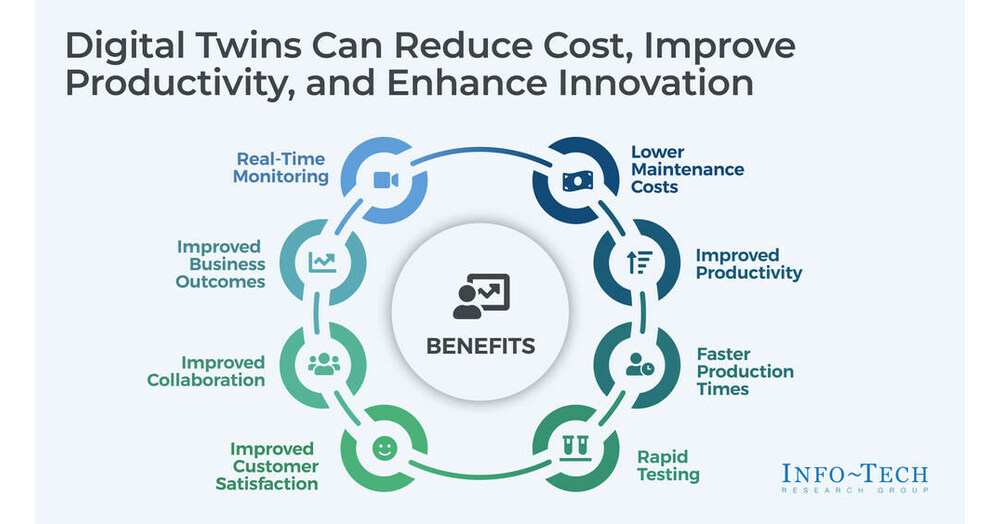Digital twins represent a groundbreaking advancement in the field of simulation and optimization, revolutionizing how businesses enhance their operations and decision-making processes.
Understanding Digital Twins
Digital twins can be defined as virtual representations of physical systems or processes. They are created by integrating real-time data and applying modeling techniques to mimic the behavior and characteristics of the physical counterparts accurately. This allows businesses to gain a comprehensive understanding of complex systems in a virtual environment.
The benefits of digital twins are profound. They enable organizations to monitor and analyze real-time data, predict behavior, and perform what-if scenarios. This empowers decision-makers to optimize processes and make informed choices based on accurate simulations and predictions.
Simulation and Optimization with Digital Twins
Simulation plays a crucial role in digital twin technology. It allows organizations to replicate real-world scenarios, making it possible to test various strategies and outcomes without any real-world consequences. By running simulations on the digital twin, businesses can identify potential bottlenecks, optimize processes, and determine the most efficient ways to achieve their goals.
Digital twins, when coupled with artificial intelligence and machine learning algorithms, have the potential to revolutionize optimization efforts further. By leveraging these technologies, businesses can analyze vast amounts of data generated by the digital twin, identify patterns, and uncover optimization opportunities that were previously hidden. This enables organizations to make predictive and prescriptive decisions, enhancing efficiency and productivity.
Various industries are already utilizing digital twins for simulation and optimization purposes. In manufacturing, digital twins are used to simulate production processes, identify potential issues, and optimize supply chains. In healthcare, digital twins help improve patient care by enabling personalized treatments and predictive monitoring. Smart cities utilize digital twins to optimize infrastructure and improve urban planning.
Driving Efficiency and Innovation
One of the most significant advantages of digital twins is their ability to enhance operational efficiency. By adopting digital twin technology, businesses gain real-time monitoring and analysis capabilities. They can track the performance of physical systems and processes continuously, detect anomalies, and make data-driven decisions to improve efficiency, reduce downtime, and minimize costs.

Image courtesy of www.prnewswire.com via Google Images
A compelling case study is the implementation of digital twin technology in a manufacturing plant’s maintenance processes. By creating a digital twin of the facility, the company could simulate different maintenance scenarios and determine the most efficient strategies. This resulted in significant cost savings and increased productivity, as unnecessary downtime was minimized, and maintenance efforts were optimized.
Digital twins also play a pivotal role in fueling innovation and decision-making. By enabling organizations to experiment and explore new possibilities in a virtual environment, they reduce risks associated with real-world experiments and their potential consequences. This encourages businesses to think outside the box and embrace innovative approaches to problem-solving, ultimately leading to improved products, services, and processes.
Overcoming Challenges and Ensuring Success
While the benefits of digital twins are compelling, there are challenges that organizations must address to ensure successful implementation. Data security and privacy concerns are paramount, as digital twins rely on real-time data from physical systems. Safeguarding sensitive information within the digital twin ecosystem is crucial to protect business interests and maintain customer trust.
Another critical aspect of developing reliable digital twins is the availability of accurate and up-to-date data. The fidelity of the digital twin depends on the quality and relevance of the data used for its creation and ongoing operation. It is essential for organizations to establish robust data collection mechanisms and ensure data integrity throughout the digital twin lifecycle.
To facilitate the widespread adoption and interoperability of digital twins, collaborative efforts are necessary. Industry players, academia, and governmental bodies should work together to establish common standards and protocols for digital twin development and usage. This will enable seamless integration across different domains and foster innovation through knowledge sharing and cooperation.
Final Words
As businesses strive for continuous improvement and innovation, digital twins have emerged as a transformative technology. They unlock the power of simulation and optimization, providing organizations with a comprehensive understanding of complex systems and processes. By leveraging digital twins, businesses can drive operational efficiency, fuel innovation, and make data-driven decisions that lead to improved outcomes.
Looking ahead, the integration of digital twins with emerging technologies like the Internet of Things and blockchain holds even more promise. The future implications of digital twins are vast and exciting, as they continue to reshape industries and empower organizations to thrive in an increasingly complex and interconnected world.



